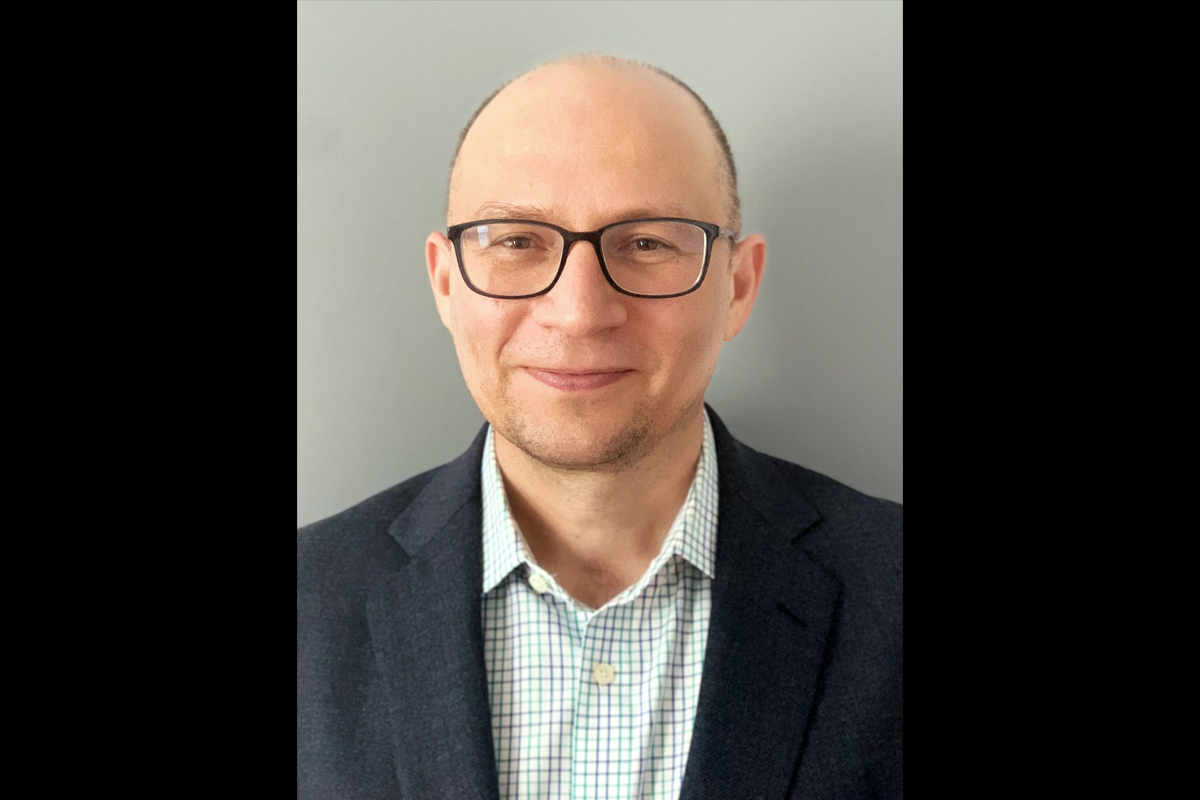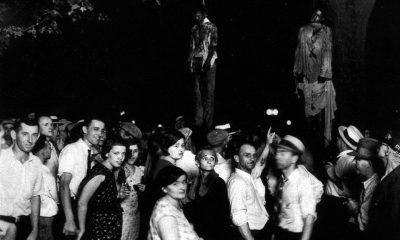States
History Professor’s Book Examines Racism In Modern Russia

In his insightful work, “Racism in Modern Russia: From the Romanovs to Putin,” University of Illinois Urbana-Champaign history professor Eugene Avrutin explores Russia’s complex racism past. His investigation shockingly reveals the nation’s history of prejudice.
Avrutin’s story centers on Russia’s deep-rooted bigotry. From the fall of the tsarist government to Putin, it covers 150 years. In 2013, Moscow had a massive anti-migrant riot, which Avrutin highlights. Angered at the arrest of a migrant worker for murdering an ethnic Russian man, the mob chanted, “Russia for the Russians.” Amazingly, this phrase was employed in the late 19th century to recruit extreme rightists as the tsarist authority collapsed. These activists saw the old order under threat.
Understanding Russia’s history of racism is crucial to this subtopic. Avrutin’s work emphasizes the significance of identifying and overcoming racial tensions and prejudice, which still plague the country.
Racism In Modern Russia: Race-based Thought In Soviet Russia
Avrutin’s research shows that race-based cognition in Russia is complex. Russia’s uninterrupted colonial expansion blurred the borders between conquerors and colonized people, unlike many other empires. People were classed by religion, then class or nationality. Official paperwork lacked a racial categorization.
Soviet rule caused a contradictory change. Soviet Russia sought to construct an equitable, anti-racist social paradise. Interestingly, Langston Hughes, Claude McKay, and W. E. B. Du Bois regarded the Soviet Union as a model for Black equality. However, the state’s categorization system, which rejected numerous identities, gave individuals a clear racial perspective.
This subtopic shows Russia’s complicated connection with racism. Soviet equality principles clashed with a classification system that condensed the world into racial categories, affecting Russians’ self-perception and surroundings.
Contemporary Racism In Putin’s Russia
Eugene Avrutin analyzes modern Russia and its changing racism. Putin’s presidency has changed ethnic Russians’ self-perception and worldview. The social position now depends more on race and whiteness.
Russia has accepted fringe views into mainstream debate in recent years. This change happened when Russian politics and culture became more conservative, normalizing sexism and homophobia. Putin’s autocratic methods bolstered the European extreme right and set a global example for white nationalism.
Avrutin describes a rise in racial violence and xenophobia in Russia due to an unequal economic recovery and fears about southern border migrants. Those who don’t match the ethnic Russian mold face racial discrimination. It’s a potent reminder that race and identity continue to affect the country and present difficulties that need attention and understanding.
The book’s three subtopics reveal Eugene Avrutin’s significant insights about racism in Russia, including its historical beginnings, paradoxical forms throughout the Soviet period, and current development under Putin. The tale connects past and present to emphasize the need to solve these complicated concerns.
The Complex Tapestry Of Ethno-racial Groups In Russia
Russia’s history is shaped by ethno-racial diversity. Russia takes a different approach to race and rights than several countries. Despite this diversity, biases and divides formed against East Asians, Poles, and Jews.
Russia’s race relations changed in the late 19th century. Fears of occupation, economic domination, legal restrictions, and demographic transitions drove daily violence and prejudice. These concerns were present in both the far-western borders toward Jews and Poles and the far-eastern periphery against Chinese, Koreans, and Japanese.
Diversity in Russia has not always led to unity. Hidden ethnic and racial tensions have woven a complex tapestry of intergroup relations that shape society’s beliefs and behaviors.
Read Also: Charles And Jeanne Morris: Champions Against Racism And Pioneers For Black Progress
The Elevation Of Whiteness In Putin’s Russia
Vladimir Putin has changed how ethnic Russians see themselves and their place in the world. Whiteness and race are increasingly crucial in social rank. Whiteness’s impact on social status has become more apparent in a color-blind culture.
This change is not isolated. Many fringe concepts have entered the mainstream in recent years. It coincides with a conservative movement in Russian politics and culture that normalizes sexism and homophobia, strengthens ‘traditional family values,’ and regulates family and reproductive behavior.
Putin’s government has supported the European extreme right and enabled this change. Putin’s Russia has inspired white nationalist governance globally. Modern Russia has elevated whiteness amid a worldwide movement toward right-wing ideas and exclusionary policies.
Racial Strife In Contemporary Russia
Racial violence and bigotry are rising in Russia, putting it at a crossroads. The uneven economic recovery and fears of immigration from Russia’s south have led to this worry. Over 11 million post-Soviet migrants entered Russia between 1992 and 2006. Thus, ethnic Russians are diminishing.
Russia had 4.5 million unauthorized migrants from Central Asia and the Caucasus by 2000. Anyone who does not meet the ethnic Russian stereotype faces racial discrimination. This racial struggle has caused most ethnic Russians to distinguish themselves from ‘blacks.’
In Eugene Avrutin’s work, racial biases are engrained in Russian society. These three subtopics illuminate Russia’s ethnic-racial variety, whiteness’s rise, and current racial conflict. The paper stresses the importance of recognizing and tackling these difficulties.
Economic Factors And Racial Strife In Russia
The rise of racial violence and xenophobia in Russia is complicated, but economic considerations are a significant component. The unequal post-Soviet economic recovery has caused instability and resource rivalry. An economic imbalance has raised concerns about foreign immigration, notably from Russia’s south.
Over 11 million post-Soviet migrants moved to Russia between 1992 and 2006. The percentage of ethnic Russians is declining due to this migration. Russia housed 4.5 million unregistered migrants from Central Asia and the Caucasus by 2000.
Migrants are blamed for economic competitiveness and resource scarcity. Many countries experience this when economic challenges exacerbate racial tensions. Economic developments, along with other sociological and political changes, have increased prejudice and racial conflict.
Putin’s Role In Shaping Racial Attitudes
Vladimir Putin’s leadership has shaped racial dynamics in Russia. Race and whiteness have been more critical in social standing during his rule. Racial views changed with socioeconomic developments. Russian politics and society turned conservative under Putin. This trend normalizes sexism and homophobia, strengthens ‘traditional family values,’ and regulates family and reproductive behavior.
Putin’s government has supported right-wing groups worldwide and helped reshape Russia. Putin’s Russia has inspired white nationalist groups worldwide. Putin’s influence on race is complicated. His administration’s policies and sociopolitical milieu have elevated race, identity, and nationalism. This trend has led to widespread racial conflict and prejudice in Russia.
CHAMPAIGN, Ill. — Russia, under President Vladimir Putin’s administration, is perhaps the most dangerous country for racial violence in the world, according to University of Illinois Urbana-Champaign history professor Eugene Avrutin
That wasn’t always the case. In his new book, “Racism in modern Russia”,” Avrutin explores the history of racism in Russia over the past 150 years, from the end of the tsarist regime to Putin’s rule.
The book opens with a large anti-migrant riot in Moscow in 2013, following the arrest of a migrant worker for murdering an ethnic Russian man. The rioting crowd chanted “Russia for the Russians.” That slogan also was used in the late 19th century at the end of the tsarist regime, Avrutin said, “appealing primarily to individuals drawn to the radical right.” Activists chanting the slogan perceived the old order as under attack.
Until recently, scholars of Russia history and culture have dismissed the wider impact of race-based thought and practices, Avrutin wrote. Unlike other empires, Russia’s colonial expansion involved contiguous territories, so there was no sharp distinction between colonizers and those whose lands had fallen under Russian control. Populations were classified primarily based on religion and later on class or nationality. Official documents had no category to indicate race.
Soviet Russia promoted a social utopia based on equality. State policy sought to promote a single national identity, highlighting an antiracist image. African American writers such as Langston Hughes, Claude McKay and W. E. B. Du Bois looked to the Soviet Union as a model for Black equality, Avrutin said.
“But by rejecting the premise that an individual could belong to multiple identities, the state’s classification system primed people to see the world in unambiguous racial terms,” he wrote.
By the end of the 19th century, Russia included many ethno-racial groups. While race didn’t play a role in determining a person’s rights, group prejudices created divisions against East Asians, Poles and especially Jews, Avrutin said.
“The commonalities between anti-Jewish thinking and anti-Asian prejudice were many. Fears of occupation, economic dominance and entrapment, legal controls, and demographic decline all provoked everyday violence and discrimination in both the far-western borderlands (towards Jews and Poles) and the far-eastern periphery (towards Chinese, Koreans, and Japanese),” he wrote.
Under Putin, “an important shift took place in how ethnic Russians viewed themselves and the world around them: not only in terms of national-historical symbols, myths, and legends, but also through the prism of race and whiteness,” Avrutin wrote. “A society that was largely color-blind had become increasingly conscious of the role that whiteness played in determining social status.”
In recent years, ideas operating on the fringe of society have moved to acceptable discourse. “The elevation of whiteness took place against the backdrop of a conservative turn in Russian politics and society: the normalization of sexism and homophobia in popular consciousness, the strengthening of ‘traditional family values,’ and the regulation of family and reproductive behavior,” Avrutin wrote.
“There is little doubt that Putin’s authoritarian politics made it possible for white militarism to flourish. Putin’s administration not only supported the European far right – by most famously underwriting the activities of the Front National in France – but provided a model for white nationalist rule all around the world,” Avrutin said.
Contemporary Russia has seen an upsurge in racial violence and xenophobic attitudes. Several factors, including the uneven economic recovery and anxieties over an influx of migrants from Russia’s southern border, have contributed to racial strife, Avrutin said.
Between 1992 and 2006, more than 11 million people migrated to the Russian Federation from post-Soviet states, with the share of ethnic Russians steadily declining. By 2000, an estimated 4.5 million undocumented migrants, mostly from Central Asia and the Caucasus, resided in Russia.
Discriminatory attitudes on the ground of race became a fact of life for anyone who did not look typically ethnic Russian. “By the time Putin began the third term as president, most ethnic Russians had no problems drawing distinct lines between themselves and populations commonly referred to as ‘blacks,’” Avrutin said.

-

 States2 weeks ago
States2 weeks agoPearlie Golden 93-Year-Old Black Woman Shot By Texas Cop
-

 States2 weeks ago
States2 weeks agoTragedy Unveils Racial Tensions Tarika Wilson Story
-

 States2 weeks ago
States2 weeks agoLayers Of Racial Tension The Mario Woods Tragedy And San Francisco Path To Justice
-

 States2 weeks ago
States2 weeks agoLynching Of Thomas Shipp Tragedy Of Racism Echoes Through History
-

 States2 weeks ago
States2 weeks agoThe Killing Of Terence Crutcher And The Fight For Racial Justice

















You must be logged in to post a comment Login